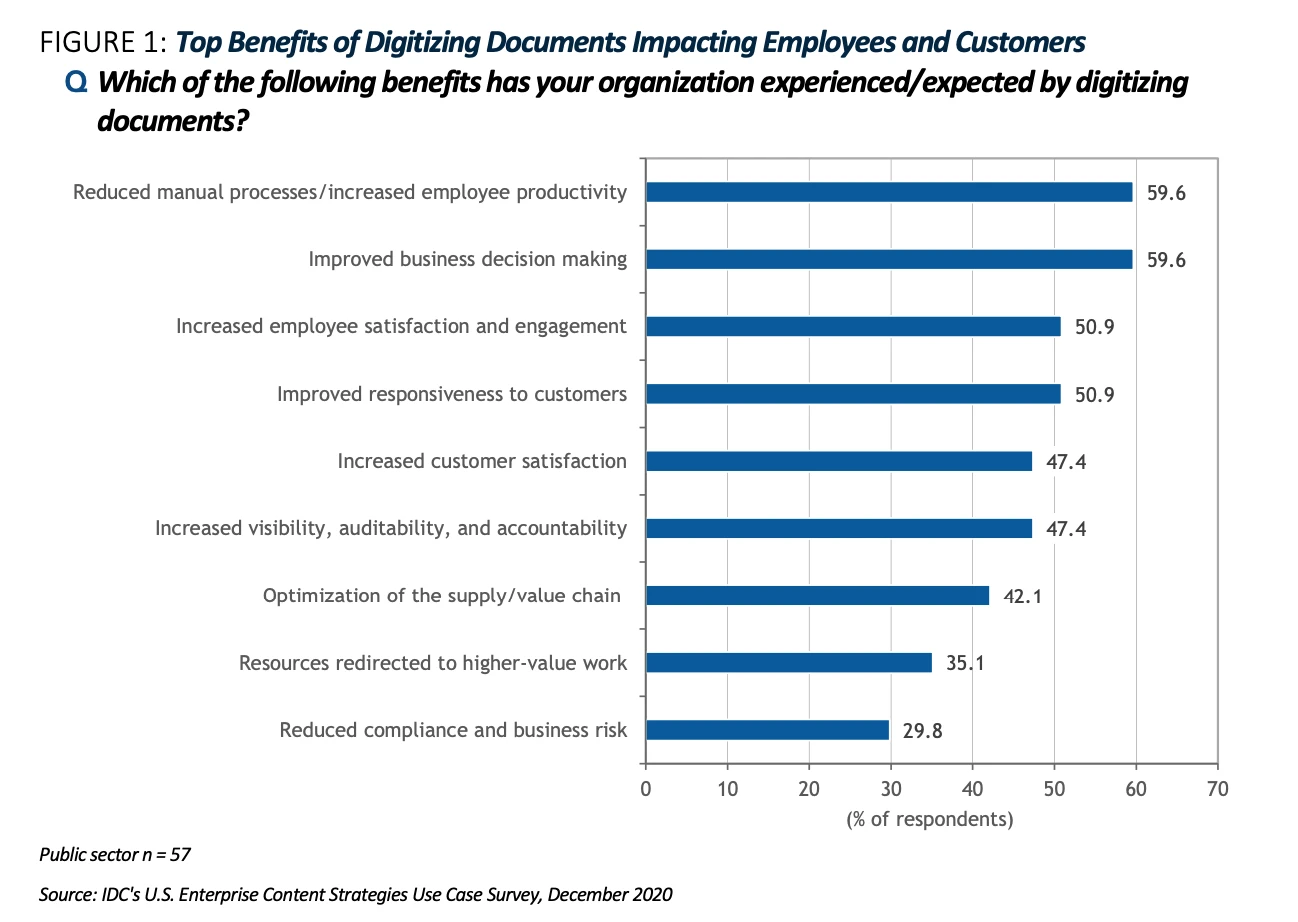Today’s government workers need universal access to digital documents, irrespective of whether they work in offices, at home, or in the field. When documents, forms, images, and web pages are encoded in Portable Document Format (PDF), employees can access them on any device, anywhere. And, since PDF files can be secured with a password and levels of access can be defined (i.e., if a user can open, print, or edit a document), they provide control over and protection of information. eSignatures also accelerate approval processes legally and securely.
Many federal agencies are ensuring that their documents are fully digital via PDF, eliminating the need to print, and supplying eSignatures to reduce workflow errors, maintain compliance, and improve security. It’s a cost-effective solution that also improves employee and customer satisfaction.
How PDF has grown into a more efficient resource for government
Since PDF was first standardized as ISO 32000 in 2008, over 40 members of ISO TC 171 SC 2 WG 8 from 20 countries have contributed to growth of the PDF specification. Today, many companies offer tools to create and edit PDFs that include all of the feature-rich capabilities of Adobe Acrobat, yet they provide these tools at a significantly lower cost.
eSignature capabilities provide a technical way to track chain of custody and authentication that paper-based forms don’t. While organizations might wait three to four days for manually signed paperwork to be routed from office to office, a signed PDF offers same-day turnaround.
No wonder that, in a recent IDC survey, 30 percent of government respondents indicated they would invest in eSignature software in 2021.

How PDF solutions and eSignatures address public sector priorities
Citizen engagement and experiences. A recent IDC survey suggests that while 18% of citizens have received government services since the COVID-19 pandemic began, 31% would like to see virtual services continued after. Via digital access, governments are providing more convenient, responsive, and better-quality services to citizens while enhancing the efficiency of government programs and services delivery.
Remotely onboarding employees. After the pandemic began, the Office of Personnel Management advised agencies to begin electronically onboarding new workers. New employees were given the choice of using eSignatures, supporting a productive hybrid environment of remote and office workers. eSignatures support the paradigm of onboarding new employees by providing a solution that can be used in person or remotely, on any device.
Records management. Easy and timely information access is imperative to meet mission requirements, serve citizens, increase worker productivity, and comply with Open Government directives. Digitizing paper records to PDF improves information accessibility, sharing, collaboration, storage, and recovery.
Managing Freedom of Information Act (FOIA) requests. Paper-based information, and the manual procedures that go with it, creates inefficiencies which can result in FOIA non-compliance. Lost records may expose agencies to legal liabilities. Work may stop as workers struggle to find records under court order. What’s more, redacting information manually produces inconsistencies as each person makes individualized determinations.
Digitizing documents into PDF allows agencies to not only quickly search, find, and redact large amounts of data but also quickly redact sensitive information before responding to an FOIA request. PDF files also assist agencies in implementing litigation support, which establishes a defensible procedure for capturing, coding, and loading digital data into e-discovery platforms.
Public safety and justice. Public safety agencies around the world are reinventing themselves digitally, transforming crime and evidence investigation, and sharing, integrating, and operationalizing information between agencies and other jurisdictions — all without breaching security. Digital courts are automating and digitizing the end-to-end court case management process, allowing stakeholders electronic access to case files, records, transcripts, and disclosure and discovery information. This approach helps to ensure that due process is maintained and embeds endurance for future requirements.
Health and human services. Paper-based records are tough to update and sync and make it extremely difficult to track an application inside the eligibility process. This can impact the amount of time needed to process applications. Processing that’s estimated to take 30 – 60 minutes actually takes 30 – 45 days due to approver wait times at every step. Caseworkers are often called on to operate remotely and thus need access to electronic documents and case files. Digitizing files allows caseworkers the access they need, in the office or the field.
Accessible digital documents. The 21st Century IDEA requires that agencies modernize their websites, including compliance with Section 508 standards, which are a part of the Federal Acquisition Regulation (FAR). Section 508 requires that agencies ensure access to public-facing content for people with physical, sensory, or cognitive disabilities. That includes information published on an agency website, site, or form or through social media in addition to content in non-web formats, such as information displayed on screens or interactive kiosks in waiting areas. To meet these requirements, agencies are using authoring tools with built-in accessibility features and document converters that enable users to easily create accessible documents.
